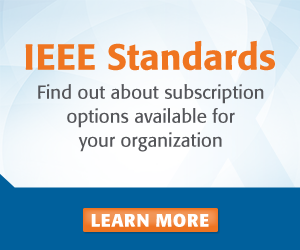Abstract:
Procedures are described in this recommended practice that may be used by electric utility companies and others to address complaints of interference caused by power line...Show MoreScope:This recommended practice describes a procedure that electric utility companies and others may use to respond to reports of interference to radio and/or television recept...Show More
Purpose:This recommended practice is intended to help all parties involved in interference reports to understand the best practices used to assess, identify and repair interferen...Show More
Metadata
Abstract:
Procedures are described in this recommended practice that may be used by electric utility companies and others to address complaints of interference caused by power line gap noise to radio, television, and other types of wireless communications. A discussion is included on how to determine if a noise may be considered as harmful interference under the FCC rules. Modern noise-locating techniques, equipment, and protocols are also described, including the use of time-domain noise signatures (sometimes referred to as signature analysis) to investigate and identify radio noise in the field, allowing unassociated interference to be ignored unless it needs to be ...
Scope:
This recommended practice describes a procedure that electric utility companies and others may use to respond to reports of interference to radio and/or television reception. It describes procedures to determine if a reported noise is harmful interference to a licensed radio service. It describes modern noise-locating techniques and equipment and protocols that use time-domain noise signatures to investigate and identify radio noise in the field.
Purpose:
This recommended practice is intended to help all parties involved in interference reports to understand the best practices used to assess, identify and repair interference problems and have reasonable expectations about the role and responsibilities of each party. It describes ways that utility staff can interact with a complainant to obtain information that will aid the troubleshooting process and it outlines reasonable timelines that will help everyone involved have reasonable expectations about the process and time it can take to respond to, identify, troubleshoot and repair a noise source. The techniques allow a utility to identify which noise sources a...
Date of Publication: 19 October 2023
Electronic ISBN:979-8-8557-0245-3
Persistent Link: https://ieeexplore.ieee.org/servlet/opac?punumber=10289664


